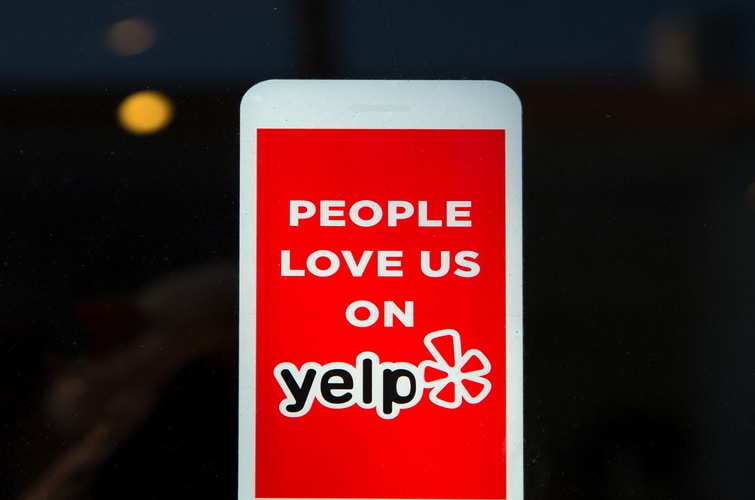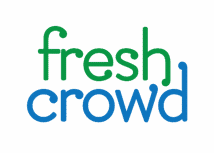Things are different now. Social media and business are a perfect combination. With billions of people using these platforms, there’s endless opportunity to reach more customers.
However, to establish your brand, attract your prospects, and increase sales, you have to be on another level from many competitors, social media noise, and even keep up with influencers, public figures, and other personalities.
Lots of websites would be counted as social media platforms. Social media marketing typically pertains to managing these online services for relationship selling — a process to facilitate a personal connection to customers and clients. Social media networks make clever use of the latest online technologies to achieve standard communication and marketing objectives.
There are different types of social media marketing out there. Distinguishing between them will boost your business’s chances of success.
Types Of Social Media Marketing Market Leaders Should Know
As the social media and digital marketing industries progress, you need to determine how to maximize social media efficiently. Being well-versed in social media marketing and its types will increase your follower count and sales.
Content Creation and Sharing
The dominant types of social media go along with content creation and distribution. Content is usually digital, which makes it less difficult to share. Sharing a business’s blog post raises its brand awareness and sales consequently.
Content creation and sharing are among the most common methods companies nowadays employ on most social media platforms. When you’re advertising the latest product, informing customers about your new business hours, or flaunting your recently 5-star reviews, you’ll be able to post external communications on whichever social platforms like Facebook, Twitter, and Instagram.
Knowing precisely what to share to be relevant to your audience is difficult, especially when aiming for a new blog post to publish daily. People value informative, helpful, and interesting content.
Content marketing leans on delivering value to your target audience to generate leads, sales, and other conversions. It also draws traffic to your website, emphasizes the need for your services, and is quicker to convert into sales than other marketing types.
But pay attention not to allow your page to become too profile-raising. Find creative ways to present different social media marketing posts or share user-generated content posted by your customers.
There are even lots of social media management tools to take care of posting, scheduling posts, tracking, and competitive analysis to streamline things.
Remember, always incorporate high-quality images or videos into your social media posts. In this fashion, more users will share them.
Paid Social Advertising
Social media marketing also involves paid social media advertising. You can pay to have your business’ advertisements or sponsored marketing messages show up in front of large volumes of target-specific sub-audiences.
Even though you’d be paying a fee and ad spend, the expectancy is that your advertisement will convert into steady sales and keep you net positive. Using these ads, you can transport users to your Facebook Page, Instagram account, LinkedIn, or website.
Photo ads
Perhaps the most typical type of ad, you’ll usually see photo ads broadly dispersed news feeds, banners, and sidebars. They’re a little easier to create than other advertisements such as stories and videos, though you’ll have to ensure that your images are high-quality.
And remember to have your photos uniform in style with the posts you share so that your audience instantly correlates the ad to your brand.

Video Ads
One of the most frequently applied types of social media marketing is video content.
These are not simply videos you put on social media. Social Video Ads are videos fitted to each social platform and promoted with paid placements to produce concrete results. They are a brilliant method for presenting content in a highly engaging and lively format. In short, a video demonstrates more shares and conversions than any marketing content.
- Short-Form / Long-Form Video
The difference between short-form and long-form videos is simple. Short-form videos are under 10 minutes, and long-form videos are over 10 minutes. Some ad formats are more compelling depending on the length of the video where they exist.
Shorter videos are favorable if you aim to make them sharable and that social media users can instantly watch and engage with while flipping through their feed. They are, to date, a perfect means to attract younger generations who are gradually preferring short-form videos over all other available media types. You’ll notice many short-form videos on Facebook, Instagram, TikTok, and Youtube Shorts.
In comparison, long-form video is typically commended as a more rational approach to capture consumers and educate the audience with an utmost focus on entertainment and narrative. Longer videos are on a business’s website, Podcast, and YouTube.
Use either form to flash your new products, give a behind-the-scenes peek of your business’ operation, and share feedback from customers who are pleased with your products/services.
Any video you post must be created to engage, educate, and persuade your audience. Videos created entirely to advertise will only turn off viewers.
Stories ads
As attested by the survey conducted by Instagram Business, half of the users interviewed stated they visited a website to acquire a service or product due to seeing it on a Stories ad.
Stories ads are also becoming more and more rampant. These posts have a 24-hour service life. This type of social media marketing post is perfect for broadcasting briefer or at-this-time content, such as product teasers, daily deals, polls, quick announcements, and the best part of an event.
Businesses have relocated their advertising budget to Facebook and Instagram Stories ads because of the reduced costs and more profitable results they observed with Stories ads.
Instagram Stories ads can be as long as 120 seconds, whether on video or image. Meanwhile, if you’re broadcasting on Facebook Stories, a video can play for 15 seconds, whereas a photo can be viewed only for six seconds.
Messenger ads
Social media ads don’t need to only surface in a user’s news feed! Contrary to the photo, video, and Story ads, Facebook Messenger ads are shown between conversations in a user’s Messenger as a sponsored message. It is a somewhat new ad feature that enables users who click your ads to start a text conversation through Messenger with the click-to-message button, or the ad can link them to your website to see more products and info.
Social Media Live Streams
Live streaming is a practical, compelling way to achieve any goals and objectives you need to fulfill.
By live streaming to channels such as Facebook, Instagram, and LinkedIn, you produce captivating content that escalates your rank in their news feed algorithms. Likewise, social media streaming enables you to draw in viewers and send them back to your website.
Live videos also generate a feeling of urgency for the viewers. It also gives a chance for users to communicate in real-time with the hosts, so it’s essential to keep watch on and respond to the comments during the stream.
There are several ways your business can effectively use live-streaming videos:
- Interviewing personalities related to your industry
- Broadcasting big events or product reveals
- Q& A
- Hosting AMA sessions with your business executives
- Hosting training or social media marketing courses
Influencer Marketing
Amongst all the types of social media marketing, influencer marketing is highly regarded. It involves a brand working with an online influencer to promote their brand, allowing businesses to broaden their reach across their buyer personas. Some collaborations are less evident as brands merely work with them to boost brand recognition.
This social media marketing campaign is usually done by recognizing influencers on YouTube, Instagram, Twitter, and Snapchat, whom your customers follow. Influencers should be reputable personalities that maintain a loyal following within a niche community.
Unlike celebrities, influencers can be anyone, anywhere. They are the people of choice who give solutions to people’s inquiries.
In 2020, businesses accumulated an average of $5.78 marketing publicity for every $1 spent on influencer marketing.
Influencer marketing pays off due to the incredible level of trust that social influencers have secured with their followers. And recommendations from them become a sort of social proof to your brand’s prospective customers. Therefore, rather than being unconvinced by a social media ad, consumers swear that if their go-to influencer likes the product or service, they will too.

Community Management
Social media community management is the process of building an authentic community. It is how your business interacts with its audience on social media marketing platforms. It’s a bit of customer service, social listening, and engagement in discussions connected to your brand.
Your community is spread out across the World Wide Web: on Facebook, Instagram, Twitter, LinkedIn, YouTube, Pinterest, Snapchat, Quora, Reddit, and even in the comment sections of posts.
Your community comprises your existing customers, target customers, and the entire individuals who engage with your brand directly and indirectly online.
The quicker your replies are, the more presumably a consumer is to return to your business. It promotes your brand image by enriching your brand relationships. When audiences notice the resolve you devote to your immediate responses, they will likewise remember your brand positively.
Contest Marketing
Contests are a type of social media marketing plan utilized by businesses to acquire new customers and re-connect with old customers. It aims to provide customers a positive brand-related experience, drive awareness about a brand and its products and services and gather information about consumers that may help with future sales-oriented marketing drives.
Here are some samples of contest marketing campaign types that you might use to promote your brand.
- Event-Focused Contests rested on specific events that happen all year round.
- Giveaways are a straightforward contest marketing idea where you merely select whom to gift a free prize to, typically via a random selection method.
- Polls are surveys or questions devised to determine the public’s opinions about a particular subject or series of issues.
- Photo competitions persuade audiences to share their own photos to participate in a contest and are specifically effective in facilitating user-generated content.
- Quiz or Trivia contests allow your audience to answer queries, test what they know while building bonds for years, and likely win prizes.
Forum Marketing
Imagine forums as extensive online community spaces where industry-specific discussions are carried out. In contrast with standard platforms, an online forum is typically an online discussion that focuses on or is sorted following various topics. Participation – as a respondent or owner – can help one gain recognition within the business industry and draw qualified business leads.
Forums offer you a prominent space to build your expertise and authority in your area. The better your responses are, the more likes they will get. And this will be shown on your profile, projecting to anyone who engages with you that you’re very diligent and a business they can trust.
Forums are a clever method to drive traffic to your website when you put a relevant link in your answer.
Moreover, you can use community forums to conduct market research by asking people about their experiences with your products or services to enhance particular facets of your business.
As an entrepreneur or social media marketer, there are a few ways you can join forum marketing. You can participate in an active and relevant discussion or open your own topic. Because every forum has a particular demographic, it’s preferred to explore who the forum targets before choosing which forum is right for your business or own blog.
It is imperative to read the terms and conditions of every specific forum for necessary pointers as to what is allowed and read archived posts to see the regulations in effect.
Reviews
Customer reviews are the practical social proof desired by those considering securing purchase decisions based on the judgments from prior customers. Customers online like to see actual people discussing your brand. They want to know what you can present and if it’s worth the investment.
Satisfied customers are among the most powerful social media marketing tools. Their reviews don’t only help you modify your sales or customer service approach; they can also help you learn the customer’s viewpoint. Both the positive and negative can help you determine what’s working and pinpoint any typical problems that several consumers impart, and enable you to improve their experiences in the long run.
In the first place, only 28% will share feedback after a satisfactory experience. Enthusiastically asking for their reviews raises the probability of happy customers eager to write a review for you.
Nurturing favorable reviews and graciously addressing unfavorable ones can make your brand more in demand, boost brand awareness, maintain brand loyalty, generate leads, and convert more prospects.
Types of Social Media Platform To Leverage
There are various marketing and social media tools, each with superior potential and boundaries. Knowing the distinctions between types of social media and how people use them can help you interact more efficiently with target customers.
Social networking sites
In this period of digitalization, people have figured out ways to be socially engaged on the internet, to connect and network.
Social sites enable individuals to communicate with like-minded people and peers. These sites also allow marketers to interact with their prospective customers. A company may utilize these sites to show its superb customer service and improve its relationships with clients.
Users can share their ideas, create groups based on their interests, create posts, upload pictures and videos, and join group discussions.
Facebook remains the largest social media platform, with 2.45 billion monthly active Facebook users. With detailed targeting options for this massive pool of users, Facebook advertising is a great strategy to get started.
Examples: Facebook, Twitter, Instagram, LinkedIn, WhatsApp
Business social media channels

Business social channels deliver numerous possible uses. Be it recruiting and hiring talent, establishing B2B relationships, business development, and connecting with experts within your industry. They allow businesses to get in touch with new audiences in a business mindset.
LinkedIn advertising is primarily aimed at a corporate audience. Businesses can hammer out all three sales funnel stages, from awareness to conversion.
Examples: LinkedIn, Twitter, Tumblr
Bookmark sites
Bookmarking sites enable users to save and share links to many online resources and websites. Bookmarks are most frequently tagged, allowing following users to search for them easily by topic.
These sites help get your posts indexed faster and boost your website traffic. Likewise, choosing this one to manage various social media campaigns will help you increase brand awareness for your business and customer engagement.
Examples: Pinterest, Flipboard, Diggs, Feedly, Pocket, Reddit
Social audio platforms
The trendsetting in social media developments uses audio to communicate. The most notable benefit of audio social sites and formats is the enormous attention and engagement you’re presumably to achieve from listeners.
Lively, exciting discussions can help you establish your image as an authority in your field and present your business or brand to relevant audiences already all ears in your specialization topics.
Examples: Clubhouse, Twitter Spaces, Spotify, Spoon
Microblogging
These are clearly what they appear, sites that let the users post their short content for brief audience interactions, including links to product and service sites and links to other social sites. It is just like blogging with the distinction that microblogging has a higher regularity of posts without much accompanying text.
Examples: Twitter, Facebook, Tumblr, Instagram
Image-sharing networks
We are today in a generation of digital marketing overwhelmed by visual content. Photos’ existence is not only for personal matters, though it has also become an essential aspect of a business’ marketing strategy.
These image-sharing social media sites allow people to share and store photos for marketing purposes. They offer a social media platform to initiate discussions, influence creativity, make products appear more attractive, and stimulate customers to speak about your brand.
Examples: Instagram, Flickr, Photobucket, Pinterest
Video sharing sites
Although video platforms for businesses vary and the type of videos aren’t entirely the same – the core is similar. Video can humanize the company and your brand, entertain your customers, and inaugurate brand loyalty. Brands can run paid ads to draw new customers, invite influencers to talk about their products, or shoot their own video content.
Examples: YouTube, Vimeo, Tiktok, Facebook, Instagram, Vine
Shoppable social platforms
These platforms enable businesses to transform their social media into social shopfronts. They flaunted product tags that, when clicked, allowed your target audience to buy from you without leaving a social media app.
Whether your social media followers don’t want to make purchases on social media marketing platforms or have more prolonged buyer journeys, shopping features can allow you to tag products, include product descriptions and drive traffic to your site.
Examples: Pinterest Product Pins, Facebook Shops, Instagram Shops, Shopify, Etsy
Social review sites
Millions of individuals rely on these sites for help when deciding on service companies. They esteem validation from others to help them make the right choices on where to spend their money.
Today’s businesses must hold positive reviews on these platforms to have a successful social media marketing strategy. When a company has favorable reviews, its assertions become more conclusive because reviews serve as social proof.
Example: Yelp, TripAdvisor, Zomato, FourSquare

Sharing economy platforms
These sharing economy networks allow people to share or provide tangible and intangible with one another at scale.
It involves temporary peer-to-peer transactions to share the use of idle assets and services or to encourage collaboration. The ability to reuse surplus resources and generate income using them is very reassuring for the companies involved.
Examples: Airbnb, Rover, Eatwith, lending Club, Pantheon, Kickstarter
Discussion forums
Many of these internet-based group communities revolved around initiating a discussion, getting an answer to your question, or even looking for new business opportunities while conquering physical hindrances, such as geographical locations. Participating in these sites can increase your credibility. And that credibility and trust could increase traffic to your business website.
Examples: Reddit, Quora, Digg
Quick Social Media Marketing Strategy
Social media marketing is not only about building business accounts and publishing whenever you want. Social media marketing needs a continuing strategy to heighten your social media presence.
Relevant Audience Targeting
Figure out your buyer personas and target audience so you can aim for their demands and preferences accordingly.
Think about the people you’re striving to reach and the reasons, and how you would categorize them as a group. It’ll help prioritize new and possible customers and remember to reorient current customers.
Promote on Social Media Platforms
A fundamental factor of social media advertising is expanding your social media strategy. Social media is splendid for advertising campaigns as it lets you target the audience by their demographics, behaviors, and interests. Repurposing your blog content across the social media world will help you convey your brand story and make it gain ground.
Use Paid Search and Social Ads
Using remarketing lists for search ads (RLSA), you can customize your PPC search ads for customers who have once visited your website and which pages they viewed. Thus, you can target more relevant and qualified users already acquainted with your business.
Boost Quality Score
Quality score is a ranking metric that search engines use to demonstrate the quality and relevance of your keywords and PPC ads. Hence, it’s an essential part of social media advertising. The higher your quality score, the higher your ad will rank, leading to lower CPCs (cost-per-click).
Optimize User Engagement for SEO
One of the critical methods to draw traffic to your website and thus boost sales is optimizing your ad content. One possible SEO factor is user engagement. Focusing on user engagement must help align your website with Google’s goal to deliver more related search results for their users.
Leverage social media trends
Social media marketing trends constantly occur, particularly on short-form video sites like TikTok. Don’t hesitate to become involved, though you still need to deliberate on how you do it.

Takeaway
The many types of social media marketing might make it challenging to determine which social media network you must consider. Each platform and ad are distinctive in presence, business goals they can channel, and cost attached.
Therefore, it’s necessary to study the data and identify what type of ROI you can anticipate from exploiting different social media platforms– which is a matter we wish this content helped you with developing your own strategy.
You may call FRESH CROWD at +1 866-938-3450 when you’re still unsure where to devote your social media marketing strategy adequately. We’ll be glad to help!

